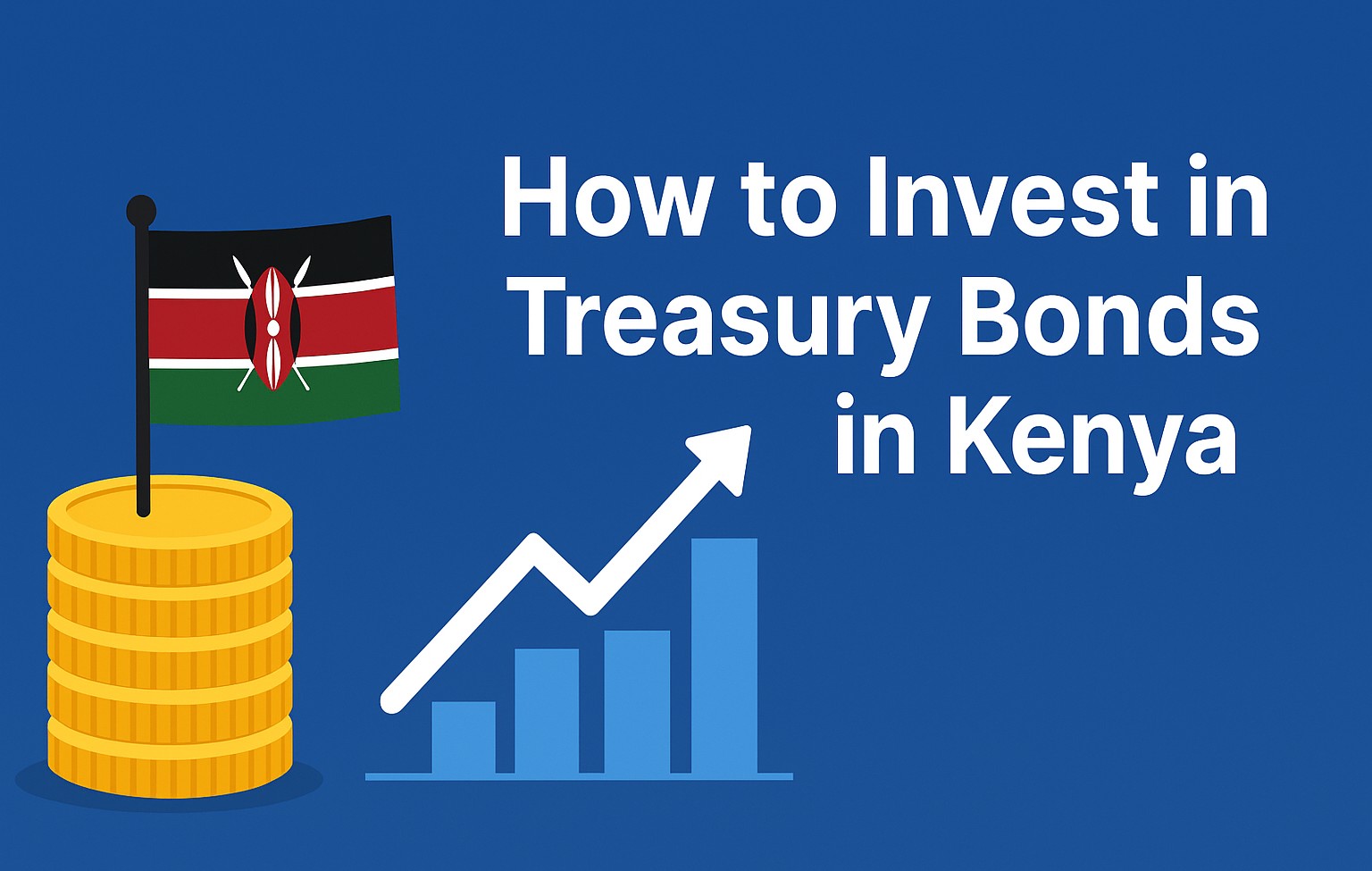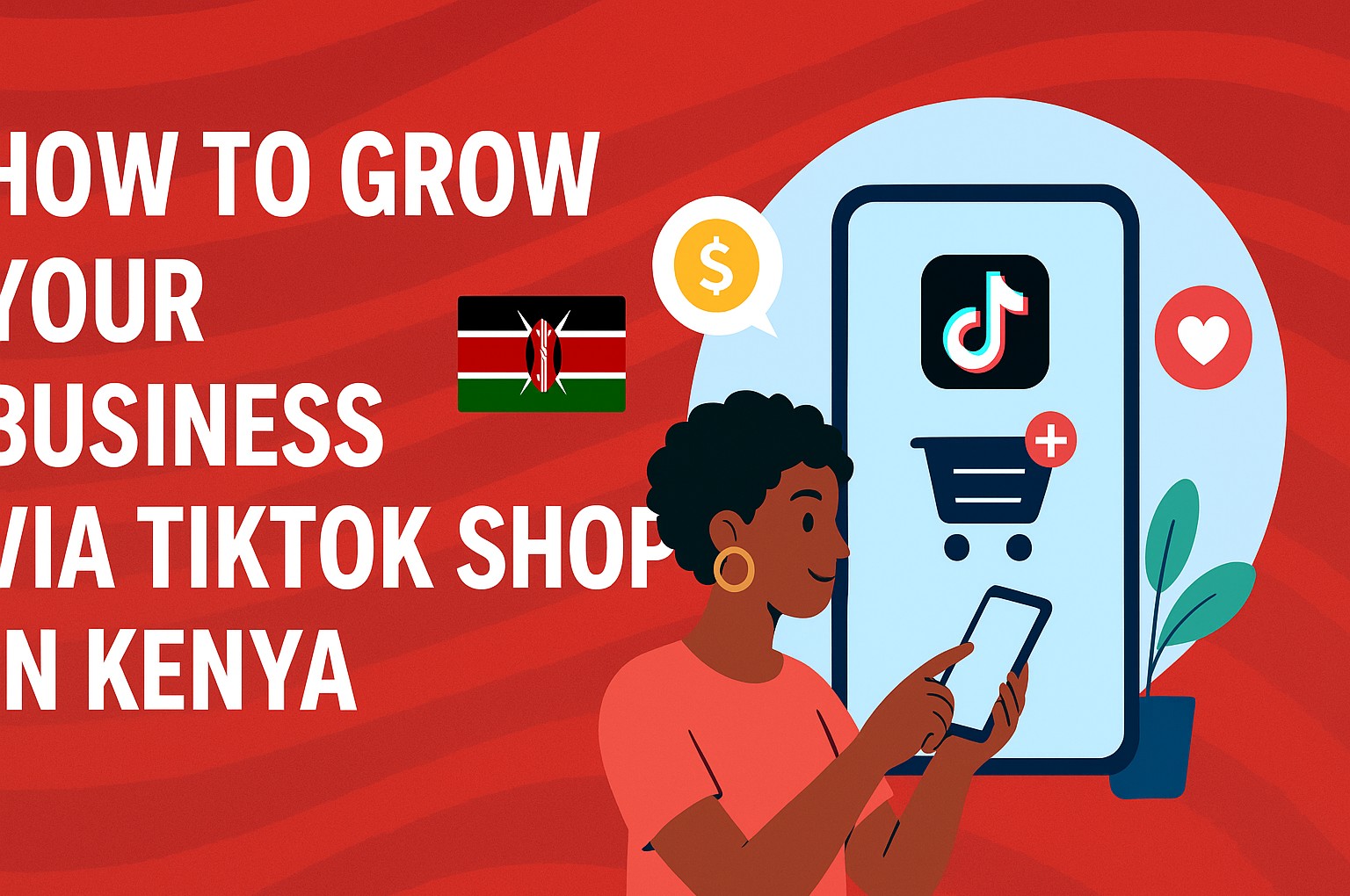

Titus Morebu
Author
How to Invest in Treasury Bonds in Kenya: A Step-by-Step Guide 📈
Learn how to invest in Kenyan treasury bonds—open a CDS account, place bids, manage interest, and exit. A practical, up-to-date guide for Kenyan and foreign investors.
Investing in treasury bonds is one of the safest ways to earn a predictable return in Kenya, backed by the full faith of the Kenyan government. If you want to diversify your portfolio, generate semi-annual income, or lock in a long-term return, this guide shows you exactly how to invest (step by step) in treasury bonds in Kenya in 2025. 🚀
Why Invest in Treasury Bonds?
- Low risk & government guarantee: These are obligations of the Government of Kenya, making default risk minimal.
- Predictable income: Most bonds pay interest (“coupon”) semiannually, giving you a steady cash flow.
- Flexible maturities: Tenors may range from 1 year up to 30 years, so you can match your investment horizon.
- Tradeable in secondary market: You can sell before maturity via Nairobi Securities Exchange (NSE) or through over-the-counter channels.
- Relatively favourable yields: For example, 10-year government bond yields have hovered around ~13–14% (2025 data).
Types of Treasury Bonds in Kenya
The Government issues several types of bonds; understanding their structure helps you pick what fits your goals:
| Type | Tenor | Interest | Tax treatment / features | Best for |
|---|---|---|---|---|
| Fixed Coupon Bonds | 1–30 years | Fixed rate, paid semiannually | Subject to withholding tax (10–15%) | Predictable income |
| Infrastructure Bonds | 5–25 years | Fixed, semiannual | Often tax-exempt | Long term, higher net return |
| Floating Rate Bonds | 2–15 years | Rate linked to T-bill/benchmark | Taxed like fixed bonds | Hedge against rate changes |
| Zero-Coupon Bonds | 1–10 years | No periodic payments (sold at discount) | Taxed at redemption / capital gains | One lump sum return |
| Savings / Development Bonds | 1–10 years | Fixed, semiannual | Taxed like fixed bonds | Retail investors, smaller sums |
Step-by-Step: How to Invest in Treasury Bonds in Kenya
1. Open a CDS Account (Central Depository System)
All government securities in Kenya are held electronically in a CDS account. Here’s what to do:
- Obtain a **mandate / mandate card** from CBK or via banks or download online.
- Fill in your personal details: name, ID, KRA PIN, contact, bank account, etc.
- Have your bank verify/stamp the mandate card.
- Submit the mandate card to CBK either through a branch or via DhowCSD portal (web or mobile). The approval typically takes up to ~7 working days if all documents are correct.
Once approved, you’ll be assigned a unique CDS number. That becomes your “investment wallet.”
2. Monitor Upcoming Bond Auctions
The Central Bank of Kenya publishes regular treasury bond auction announcements. These include:
- Issue number and name
- Face value / total size
- Tenor (maturity) and duration
- Dates for bids and settlement / value date
You can find them on the Central Bank of Kenya — Government Securities page. These auctions are typically monthly. Use the auction calendar to plan your participation.
3. Decide Your Bid Method & Amount
During auctions, you choose between:
- Competitive bid: You propose the yield (interest rate) you’re willing to accept. Your bid may or may not be accepted depending on demand.
- Non-competitive bid: You accept the rate determined by the auction and your bid is guaranteed (within the allocation limits).
Minimum investment is often KES 50,000 (or per announced terms) and increments in multiples (e.g., KES 50,000). Ensure you check the particular bond’s terms.
4. Submit Your Bid
You can submit your bid via:
- **DhowCSD portal / mobile app** — the preferred digital route
- Through your commercial or investment bank / licensed broker
- At designated CBK counters (for in-person) if available
Fill in the issue name, face value amount, yield (if competitive bid), your CDS number, and sign. After the bid window closes, CBK allocates based on demand and yield levels.
5. Payment & Settlement
Once your bid succeeds, you will be informed how much to pay. Payment is typically by your commercial bank transferring funds to CBK’s virtual account before the value date. Late or incomplete payments may lead to bid rejection.
On settlement date, the bond is credited to your CDS account and interest schedule begins.
6. Receive Interest & Maturity Redemption
- Interest (coupon) payments are usually made **every six months** into your bank account linked to the CDS. (For fixed-coupon bonds.)
- At maturity, you get back the face value (principal amount) back to your bank account.
- You may also choose to **roll over** investments by instructing CBK before maturity to leave proceeds in a new bond issue.
7. Exiting Early or Secondary Market Trading
While holding to maturity is ideal, you may wish to exit early. Options include:
- **Sell on the Nairobi Securities Exchange (NSE):** many government bonds are listed, enabling trading among investors
- **Over-the-counter (OTC) / rediscounting with CBK:** CBK offers rediscounting for some bonds, typically at a discount (i.e., you incur a cost). Note: This option is often penal.
Tax & Costs to Be Aware Of
- Interest earned typically faces **withholding tax (10–15 %)** depending on investor status.
- Infrastructure bonds may enjoy **tax exemptions**—check specific bond terms.
- Transaction / broker fees: banks/brokers may charge service fees or commissions for placing bids or trading on NSE.
Risks & Considerations
Even though treasury bonds are low risk, some risks remain:
- Interest rate risk: If interest rates rise, the market value of your bond may fall.
- Liquidity risk: Some bonds have low trading volumes, making early exit harder.
- Inflation risk: Real returns can be eroded if inflation is high.
- Currency risk (for foreign investors): If investing in KES from abroad, currency fluctuations matter.
Tips to Maximize Returns & Minimize Risk
- Stagger maturity dates across multiple bonds (laddering) to reduce reinvestment risk.
- Mix fixed and floating rate bonds to hedge interest rate changes.
- Keep close track of government macroeconomic trends—deficits, debt strategy—as they influence bond yields.
- Prefer bonds with decent liquidity (those widely traded on NSE).
2025 Snapshot & Market Outlook
As of 2025, Kenya’s 10-year government bond yield has been around **13–14 %**, reflecting moderate upward pressure. Long tenors get higher yields but come with more interest rate sensitivity. Be cautious: while yields are attractive, there is growing investor concern over public debt levels and borrowing costs.
Final Thoughts 🎯
Investing in treasury bonds in Kenya offers you a balance between safety and yield. The process—opening a CDS account, bidding in auctions, receiving interest, and optionally trading early—is straightforward when you follow the steps above. For long-term investors, bonds can be a steady anchor in a diversified portfolio.
If you’re ready to begin, start with the CBK’s Government Securities portal or download the DhowCSD app to open your account and watch the next bond auction. 💡
Gallery

Related Articles
3 articles
How to Become a Supplier to Supermarkets in Kenya – A Step-by-Step Guide 🌟
Learn how to register, pitch, and win supply contracts with Kenyan supermarkets. Step-by-step process, tips, and legal requirements — your roadmap to success.

Best Money-Saving Strategies for Kenyan Small Business Owners
Practical and actionable tips for small business owners in Kenya to cut costs, boost profits, and build resilience in 2025.

How to Grow Your Business via TikTok Shop in Kenya 🚀
Unlock TikTok Shop Kenya strategies to boost sales, visibility and customer trust with proven tactics for 2025 success.